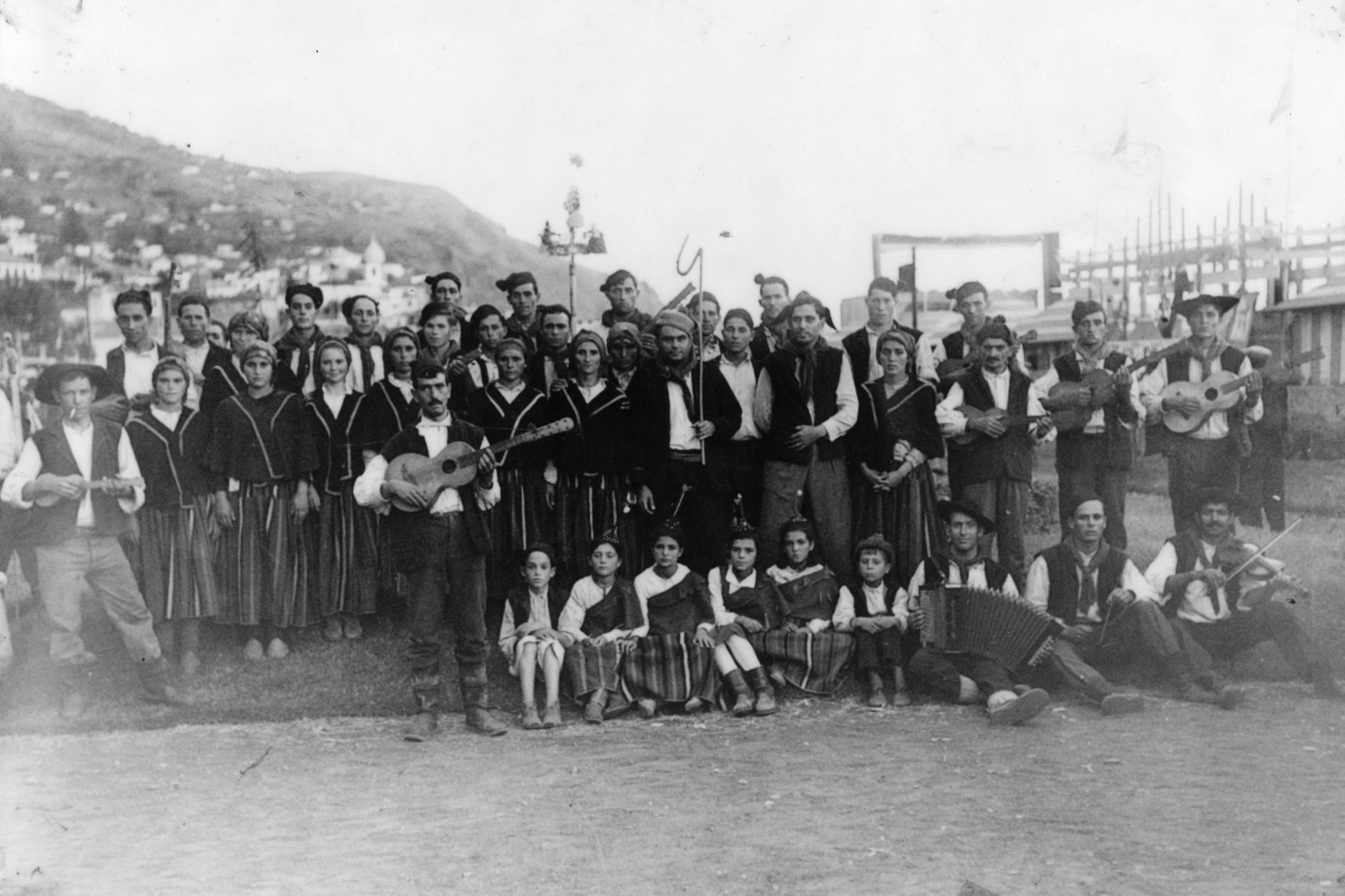Did you know that on September 18, 1938, the verses that originated the “Bailinho da Madeira” were sung for the first time?
On the 18th and 19th of September the “I Festa da Vindima” took place in Funchal, organized by Father Laurindo Leal Pestana, responsible for the School of Arts and Crafts, and by a commission from the “Estacão Agrária da Madeira”, with the main objective of raising funds to rebuild and maintain the school's current expenses and also promote Madeira grapes and wine.
This festival spread throughout the archipelago and from all locations agricultural products were donated to be sold on the days of the festival, reverting the product to the school.
During the party, the Madeira Tourism Delegation promoted and held a folk ranch contest with prizes. 11 groups participated.
On September 18, a parade of agricultural products took place, accompanied by folkloric ranches, from the “São Lázaro” bridge, in the west of Funchal, to “Campo Almirante Reis”, in the east - the center of the party. The Arco da Calheta ranch, through its leader, the illiterate poet João Gomes de Sousa (1895 - 1974), better known as “Feiticeiro da Calheta”, who when he approached the entities sang: “Deixai passar” / “Esta nossa brincadeira” / “Que nós vamos cumprimentar” / “O Governo da Madeira.” / “Eu venho de lá tão longe” / “Venho sempre à beira mar” / “Trago aqui estas couvinhas” / “P´ra amanha p´ro seu jantar”. These verses allude to the boat trip from Calheta and the agricultural products they brought to school.
On September 19, 1938, the folkloric ranch contest took place. First, there was the Arco da Calheta ranch. Satisfied with the prize, Feiticeiro da Calheta sang: “Deixa passar / O senhor da capa preta / Quem ganhou o primeiro prémio / Foi o rancho da Calheta. / Deixai passar / Esta linda brincadeira / Que a gente vamos bailar / Pr’a gentinha da Madeira”
In 1949 these verses were adapted and recorded in the publisher Valentim de Carvalho, by the artist Maximiano de Sousa, better known by Max (1918 - 1980), with musical arrangements by Tony do Amaral and Mário Gonçalves Teixeira, giving rise to the song “Bailinho da Madeira ":" I come from there so far (“Eu venho de lá tão longe”) / I always come by the sea (“Venho sempre a beira mar”) / I bring these couvinhas here (“Trago aqui estas couvinhas”) / For your dinner tomorrow. (“p´ra amanhã o seu jantar”) / Let it go (“Deixai passar”) / This beautiful joke (“Esta linda brincadeira”) / Let us dance (“Que a gente vamos bailar”) / For the people of Madeira (“P'ra gentinha da Madeira.”) / And Madeira is a garden (“E a Madeira é um jardim”) / There is no equal in the world (“No mundo não há igual”) / Her charm has no end (“Seu encanto não tem fim”) / She is the daughter of Portugal (“É filha de Portugal”) ”.
“Bailinho da Madeira” is one of the most known Portuguese songs in the world and has been performed countless times by other artists.
Text: Paulo Ladeira / DRC.


